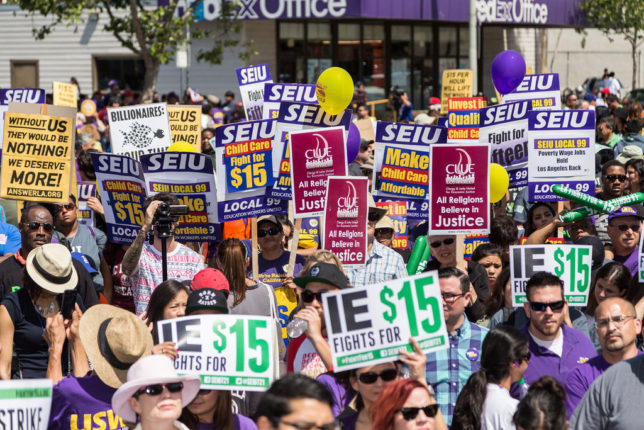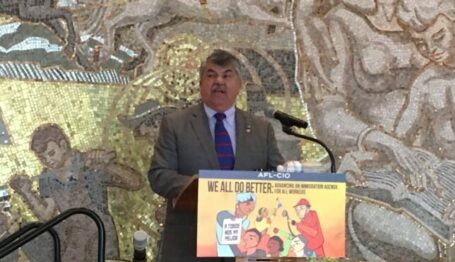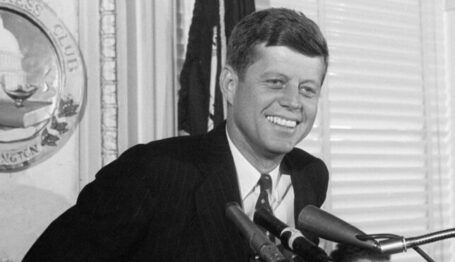Labor Watch
Even Private-Sector Labor Unions Aren’t Free Associations


Defenders of private-sector labor unions have a point when they say that workers should be able to associate freely into labor unions. Freedom to peaceably assemble is a core American political right.
But just how free are these associations, really? In practice, the government gives private-sector labor unions numerous privileges beyond those enjoyed by normal civil society groups like the Knights of Columbus, a Roman Catholic fraternal organization which has generated controversy from left-wing U.S. Senators recently.
Through the federal National Labor Relations Act (NLRA) which governs most private-sector labor relations, private-sector unions gain the power to compel businesses to negotiate with them, to monopolize representation in workplaces, and—under the laws of 23 states, the District of Columbia, and four of the five inhabited U.S. territories—force employees to pay fees for unwanted representation or be fired.
The core of the NLRA system is compulsory bargaining with a majority representative. Prior to the passage of the NLRA, employers were free to negotiate with a union or not to negotiate. Today, employers are obligated to negotiate with any representative able to show that a simple majority—50 percent plus one—of the relevant employees (how the law defines “relevant employees” is highly technical and not relevant here) support the union. Unions don’t even have to show majority support by a secret-ballot vote; the employer can agree to “voluntary recognition” based on the union’s presentation of signed cards, a practice known as “card check.” In this way, the union functions more like a pseudo-government than a private organization that nonmembers are free to ignore.
Despite the unfairness majority representation imposes on union dissenters, one might say that that compelling bargaining is fine due to a perceived imbalance of power between an employer and employees. But unions are given another special right under the NLRA that complicates this simple narrative: They can—and in practice, always do—demand monopoly representation of the employee group. Employees who did not support (and continue not to support) the union’s bargaining objectives or think they could get a better deal on their own are forced to settle for the union contract, just like losers in a general election have to live under the policies of the government. This unpleasant fact creates an incentive to join the union and pay full dues, because (under most circumstances) only union members can vote on contract ratification.
And in the 23 non-right-to-work states, the District of Columbia, and the U.S. territories of Puerto Rico, the Virgin Islands, the Northern Mariana Islands, and American Samoa, unions have an additional lever of power against employees. In those states, unions can collect “agency fees” from the non-members that they represent as part of their monopoly. (The formal “union shop,” which forces all employees to join the union, is prohibited by Supreme Court precedent.) So the supposed “free association” of workers actually has something close to taxing power, guaranteed by bargaining privileges set by the federal government, which it uses to establish itself as a nominally private pseudo-government with the power to compel non-members.
And while private-sector unions do not have many of the conflict-of-interest problems created by government worker unions, their reliance on federal government privileges goes far beyond most other civil society organizations—undoubtedly a factor in private-sector unions’ own vast political spending.
According to the Center for Responsive Politics, the top labor union spender in the federal elections in 2018 was the Carpenters and Joiners—a principally private-sector union. The Carpenters sent $11.6 million to Super PACs associated with the Democratic leadership in the House and Senate (the House Majority PAC and Senate Majority PAC, respectively). Other unions with substantial private-sector involvement including the Service Employees International Union and the Laborers International Union of North America spent just under $18.8 million politicking in the midterms, with support going overwhelmingly to Democrats more likely to protect and expand union privileges.



